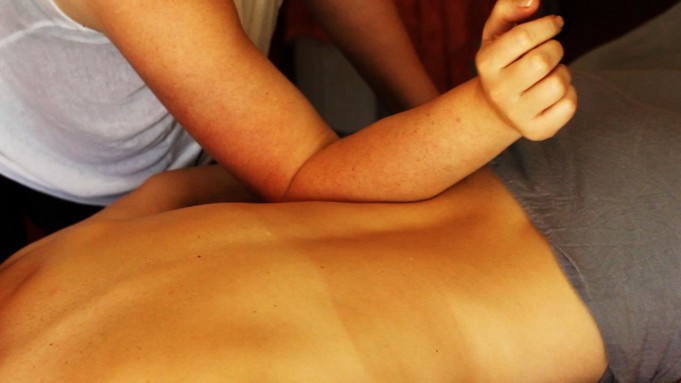Before you request a deep tissue massage, below is everything that you need to know. Nothing is more relaxing than getting a massage after a stressful day or is a stressful week.
As a matter of fact, if I could get a massage every single day of my life, I wouldn’t mind paying for it as long as I can afford it.
If you want to get deeper into the planet of massage, then this usually would mean that you are requesting for a deep tissue massage.
There is no doubt that deep tissue massage comes with numerous benefits; however, it is not usually reserved for people who are virgins to full body massage because of the intense pressure involved.
So if you’re prepared to enjoy your first deep tissue massage, then you must bear everything that we have listed in this article in mind, so that you do not end up running out of the massage parlour.
Get ready for a firmer and deeper massage
A deep tissue massage is quite similar to the regular massage in a lot of ways specifically in the movements used, which is kneading and gliding.
Nevertheless, there are several notable differences between a regular massage and a deep tissue massage, and these differences are from the speed of the strokes to the pressure used.
What a deep tissue massage involves is applying firmer pressure to the deeper layers of a person’s muscles and the fascia which is the connective tissue that surrounds the muscles.
The speed of the strokes used in deep tissue massage is usually slower. Now you can imagine how strange it would be when a veteran regular massage client goes to a massage parlour and gets a combination of deeper firmer and slower massage.
What a regular massage does for you primarily is to relax your body and mind but it deep tissue massage, on the other hand, is designed to help you achieve a broader goal.
When a deep tissue massage is done correctly, it will relieve chronic pains and aches in your body especially in places like your lower back and your upper back.
In-fact, a deep tissue massage is usually recommended for relief from chronic back pains, stiff neck, leg muscle tightness, and even sore shoulders.
Discomfort and pain
Because a deep tissue massage goes deeper the techniques used I usually get towards breaking down muscle adhesions and also breaking up scar tissues.
Muscle adhesions which are popularly referred to as knots can cause severe inflammation, pain, and limit quite a range of motion. Something else that knots can create is a disruption of blood circulation, and that would lead to even more complicated health problems.
This is the reason why you may experience discomfort and even some amount of pain when you are getting your deep tissue massage. Once you know you have scar tissues and attention you must be prepared to experience some level of discomfort and pain because your therapist would have to focus on those problem areas.
Feeling pains during a deep tissue massage cannot be said to be good or bad. while it may seem like pain or discomfort is a reasonable thing to experience during a deep tissue massage I must have you know that it is not a good one.
You also need to understand that this pain you experience is not a sign that your massage will be effective after the therapy session. The chances are that you will probably end up with blood clots bruises or even temporary soreness that might last for weeks or maybe days.
When you begin to feel pains or discomfort during your deep tissue massage your body would become things up as a way of response to the pain you are feeling.
Once your body becomes tense, your therapist would be faced with the challenge of trying to reach deeper into your tissue, and that would make your massage session less effective.
Immediately you begin to feel any pain during your massage do not hesitate to alert your therapist for your good. Once your fairer piste is aware that you are in pain, he or she will have to adjust their technique to avoid causing you more pains.
The adjustments that your therapist will be making can include preparing the superficial muscles first in an attempt to make getting into the deeper tissues a lot easier and better.
If you begin to feel soreness and it lasts more than a couple of days after you had your deep tissue massage, then it is also essential that you inform your therapist about it as there may be a problem.
From light to deep
Just like you do when you want to work out, your muscles need to be warmed up before they can be subjected through the kind of pressure or stress that comes with deep tissue massage.
At the beginning of your massage therapist is required to apply a light pressure on your muscles to warm them up and have them prepared for the more intense pressure that is to come.
The technique used at this stage will help your body feel more relaxed. These techniques usually include stripping and friction.
Stripping would mean a deep but gliding pressure on your body, while friction involves a force that is applied across your muscle green to align the tissue fibres and also release knots.
Once that face is over your therapist will then go deeper into your fascia and muscles with every phase of the massage.
If you begin to feel your therapist’s knuckles, hands, fingertips, forearms, and elbows as they do their job, you have nothing to worry about because this is absolutely normal when it comes to deep tissue massage.
Something else you would also feel is that the pressure applied to your body becomes harder especially in areas that are still such as your shoulders and neck.
During the massage, you have to do all you can to breathe normally. However, when your therapist is massaging specific areas of your body, he or she would request that you take deeper breaths. When you breathe deeper on your therapist request, it will enable him or her to reach deeper into your muscles.
Anyone who goes for a deep tissue massage old wants to get the very best benefits from it. To help you achieve this below are some things that you can do during the session and also be for the session.
1. list down your health issues if necessary especially underline medical conditions that you think may make such type of massage dangerous for you. The medical conditions you should list include allergic reactions, diabetes, high blood pressure, and any other thing that bothers you health wise.
2. if you have a preferred massage cream, oil, or even scents, do not hesitate to tell your therapist so that you can enjoy the massage session.
3. before your moustache begins to make sure that you drink a glass or two of water. The reason we advise you do this is that a deep tissue massage usually helps to release toxins from your muscles and that would make you feel nauseous or fatigue after your massage session.
Symptoms like these can be avoided when you drink enough water. If during your massage session you feel pressed do not hesitate to tell your therapist to pause so that you can use the restroom.
4. it is good that you take a warm shower before your massage preferably. What the warm water will do is to help loosen up your muscles and also make your body clean enough so that the therapist will be comfortable when giving you a massage. You would also enjoy the session more because one more time would help you relax.
After your first to deep tissue massage sessions, you may find yourself getting addicted, but we do not advise that. Please talk to your therapist and ask questions about the right intervals between sessions.
The reason for this is that the interval between sessions for you may be different from that prescribed for another person since it is usually determined according to the person’s condition.
Have you had a deep tissue massage before? We would like to hear all about it all you have to do is interact with us by leaving a comment in the comment section provided below. You can also share this article on social media by clicking on the social media icons presented on the upper left side of your screen.












